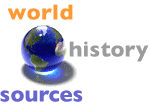 |
|||||||||||||||||||
 |
|||||||||||||||||||
 |
|||||||||||||||||||
|
|
|||||||||||||||||||
 |
|||||||||||||||||||
|
The variety of roles that maps play is astonishing. While one map might provide a simple portrait of place and a record of the contemporary landscape, another will be intentionally designed as a commercial census of the people and resources of a place. Yet another offers a glimpse into the fanciful imagination or the great artistry of the mapmaker. Sometimes a single map offers all these insights at once. To look at a historical map is to step into the past; to look at an old map is also to see the world as it would have been seen by the elites, the government, the military, or the navigators of the day. The 1794 map of Moscow below, for example, reveals several interesting historical features: compared with the modern sprawling metropolis, 1794 Moscow appears to be a quite small and compact city; the map shows the remaining inner wall of what was once a heavily fortified city; churches, the names of which constitute most of the map legend, are evidently a key feature of the 1700s Moscow landscape. A fascinating historical exercise might be to follow a sequence of maps of the same city over time—doing so, you can watch the city grow and change before your eyes.  [Click to Enlarge]
But we must always be aware that the view a map offers is partial and particular. Readers often assume that maps are inherently more “objective” than written narratives. Maps often look as though they are presenting “just the facts.” A map that shows the cities of Japan in 1790, for example, or a map of the topography of Barbados in 1885, seems to offer little scope for interpretation or subjective manipulation. Either a city is there or not, a mountain is there or not!
Well, yes and no.
Geographer Denis Wood reminds us that maps “are embedded in a history they help to construct.” Unpacking this quote, Wood is pointing to two aspects that a critical reader needs to bring to his or her encounter with maps:
Historians use historical maps for several purposes:
|
||||||||||
|
finding world history | unpacking evidence | analyzing documents | teaching sources | about |
||